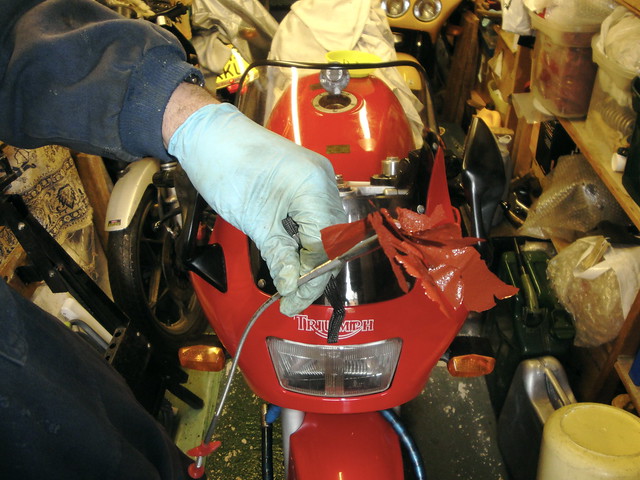


TriMotoRevival is about my experiences reviving Triumph motorcycles made in Hinckley the 1990's. These are the so-called 'T300' models, using the Hinckley factory codes for machines of this era. I started it to document the process of renovating my Lancaster Red 1991 Triumph Trophy 1200, VIN #544. Since I completed the rebuild on #544, I've added written about trips, other early Hinckley bikes, and work on my Racing Yellow 1994 Triumph Daytona 900. I hope you enjoy what you find here.



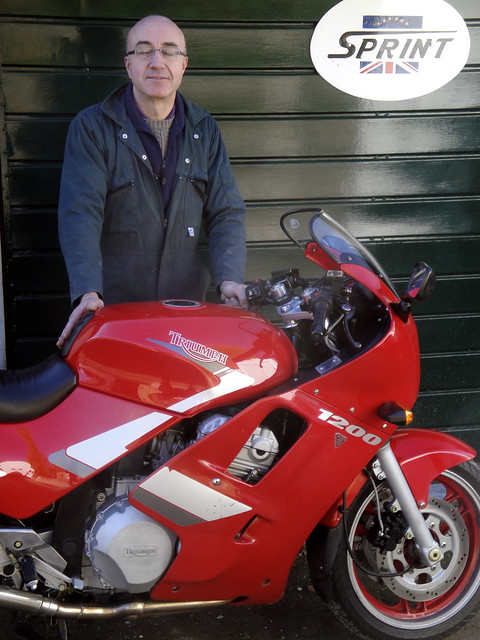
He was impressed with the quietness of the motor compared with others of its ilk. He told me the early die-cast cases (with access hatch for sprag and alternator drive gears) are noticeably quieter than the later Cosworth pressure sandcast cases. I forgot to say that the 1991 bikes have foam-lined fairing panels too, dampening the sound further. And the result. Well, was it in doubt? I think it met with his approval.

The bike had run beautifully all the way there. Irritatingly, I had more fueling problems on the way home. Maybe the bike was sad to have had to leave the cosseting world of Sprint. But seriously, I think I've got four issues to deal with, two of which are probably self-inflicted. 1/ The loose sheets of liner are wrapping themselves around the fuel tap's integral filter 2/ the fuel tap prime position isn't passing any fuel, 3/ the angle of the extended fuel pipes and filters I fitted seems to be causing at least one hose to fold. 4/ The extended pipes are also putting pressure on the vacuum pipe to the rear of the fuel tap. So I shall address all these issues before taking her out on the road again.
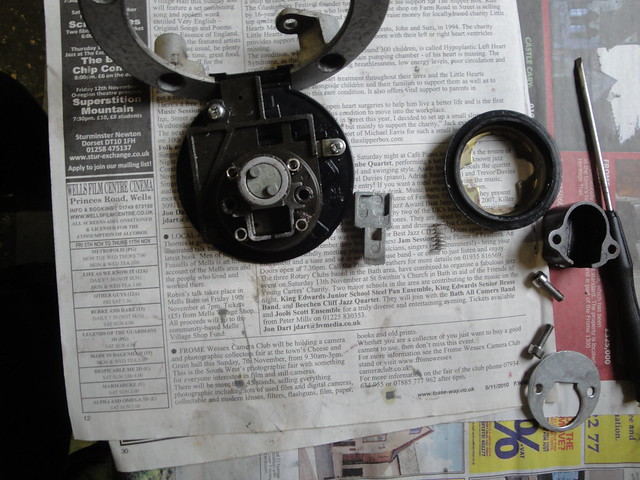


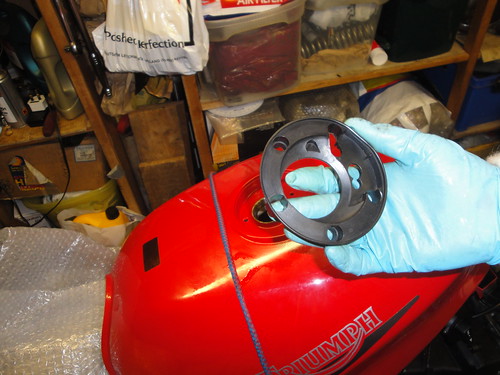
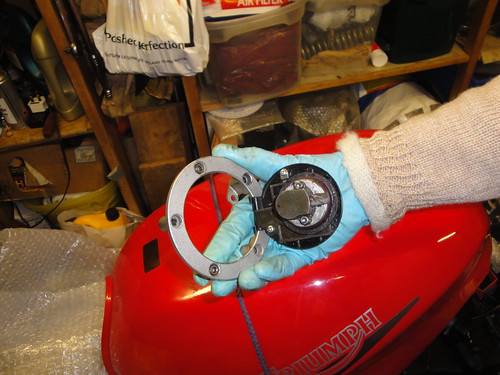
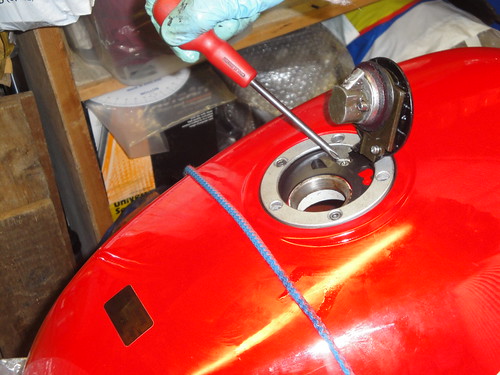
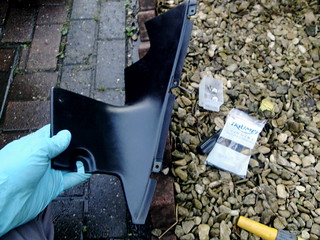
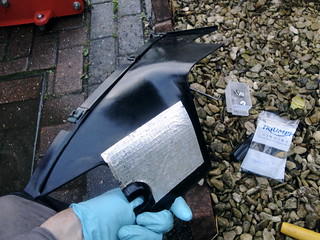
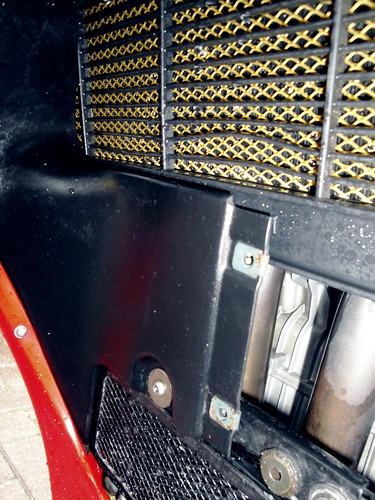

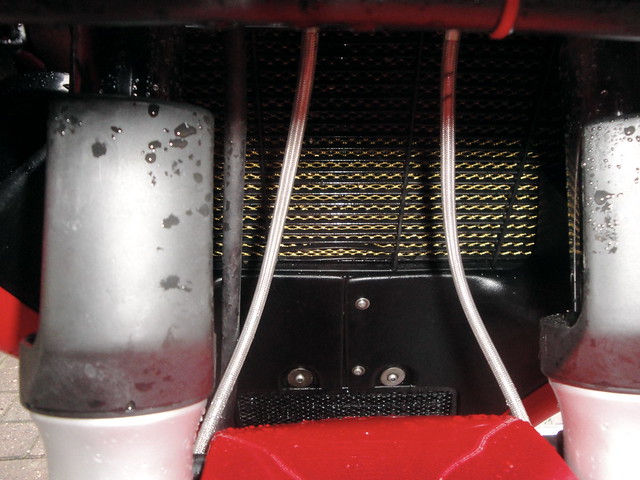
A short ride tonight didn't really prove anything other than that the cooling system is behaving predictably and the fan came on after idling stationary for a while. Fair enough.

|

|
| 1994 Daytona Cockpit | 1991 Trophy Cockpit |
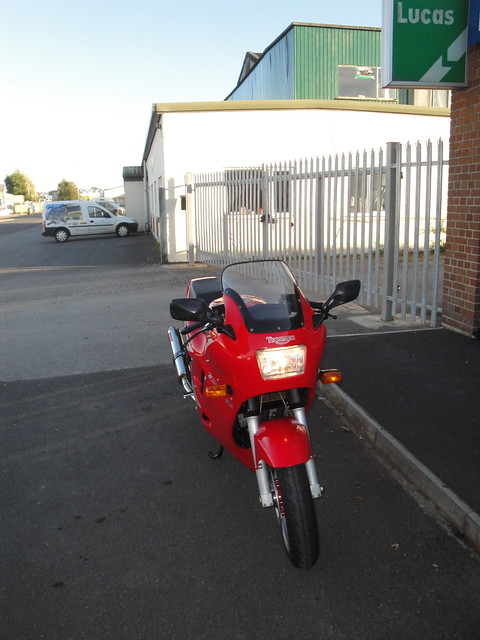
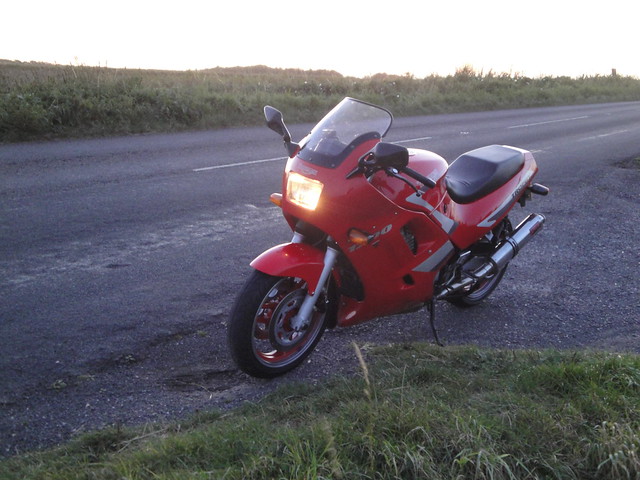 Even after all the tinkering to get the most I can out of the dip beam on my headlight, it isn't great. It is just adequate. But adequate does mean I have no need to worry about the dark any more.
Even after all the tinkering to get the most I can out of the dip beam on my headlight, it isn't great. It is just adequate. But adequate does mean I have no need to worry about the dark any more. 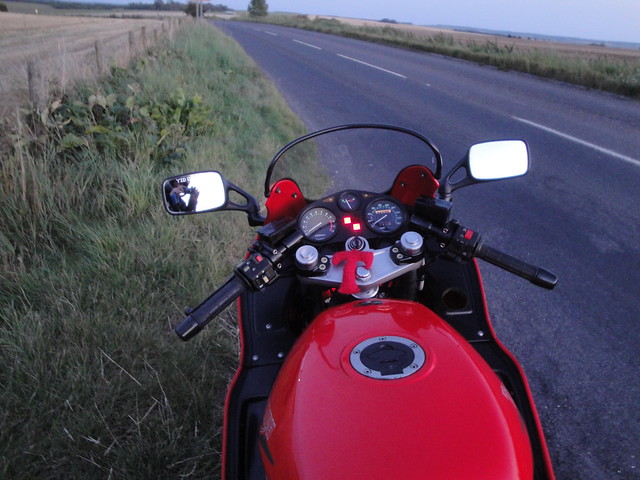


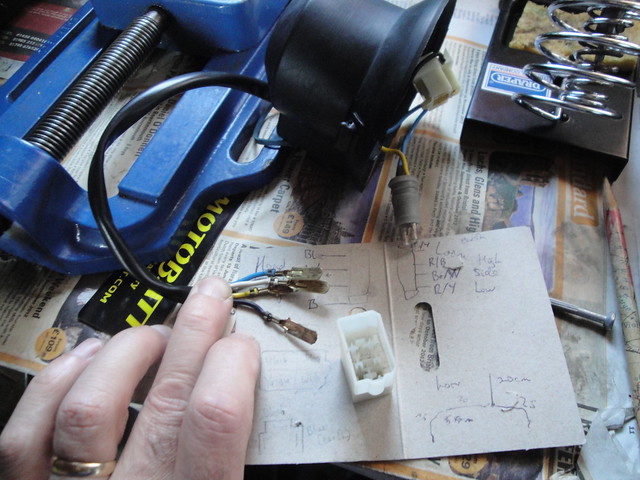
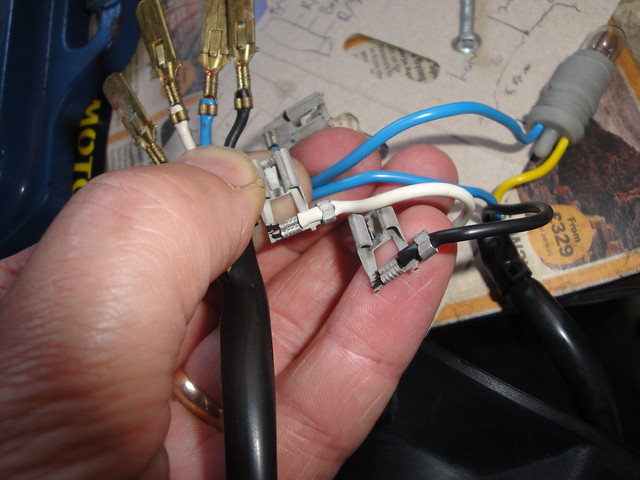

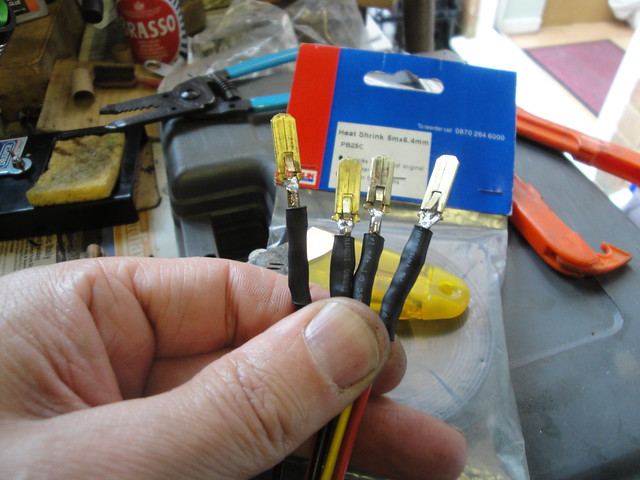
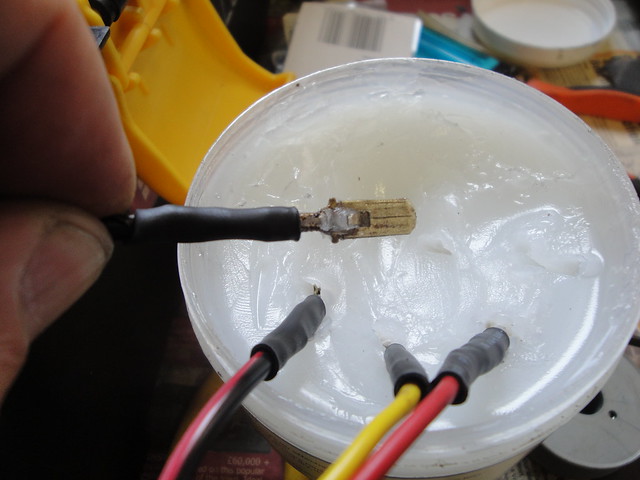

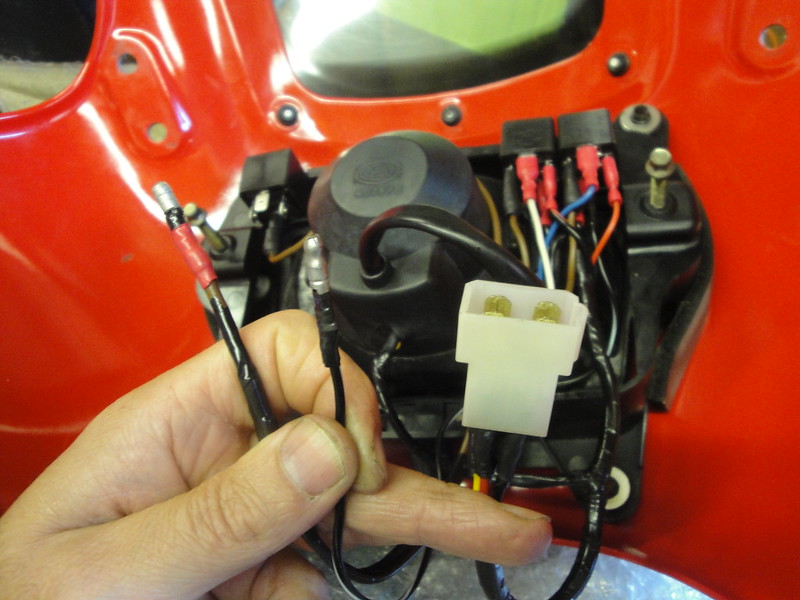
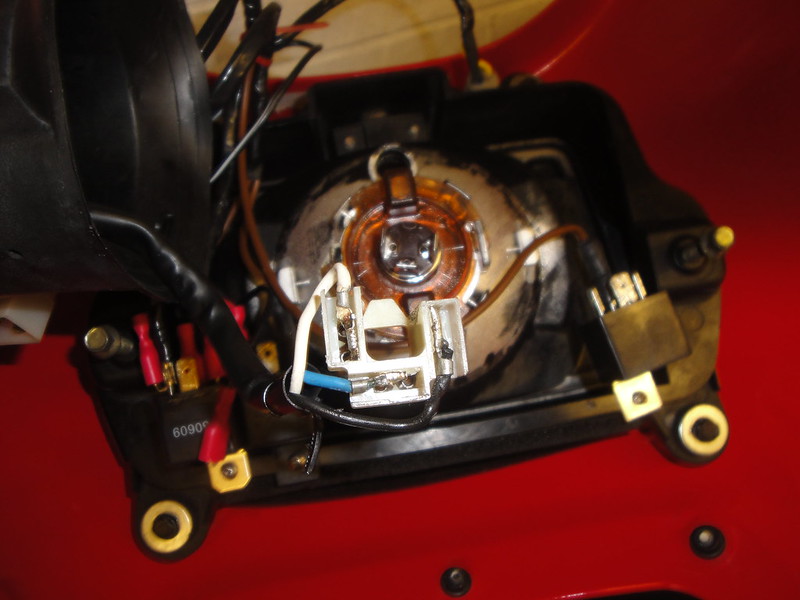
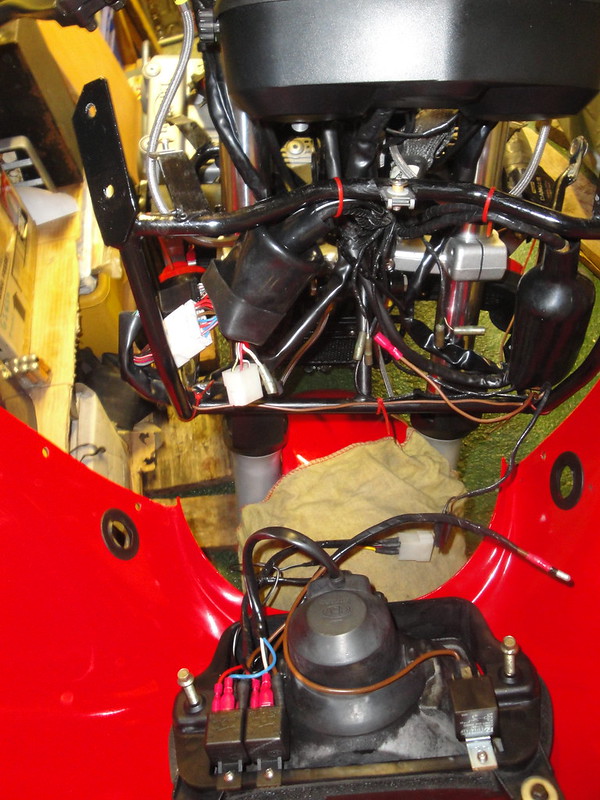
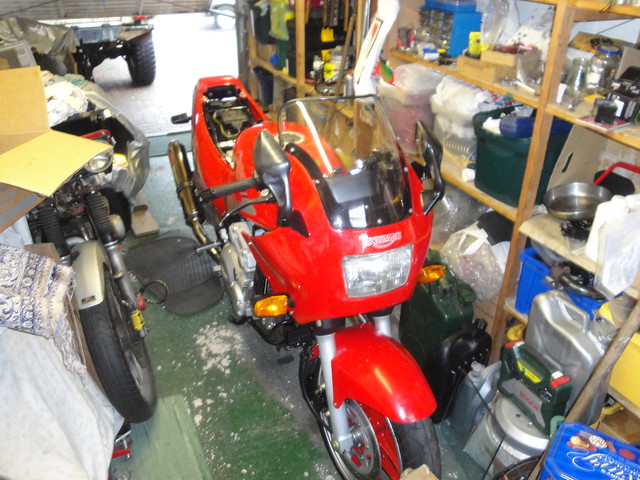
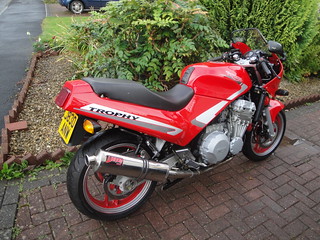

Strangely, the factory and Haynes manuals had no clue about which pair belong where. I just thought, what the hell, switch them around after work and give it a go. And go she did! Just like that. You could have knocked me down with a feather.
So the engine wouldn't run before because the timing was exactly 180 degrees out (i.e. approaching BDC instead of TDC) on all cylinders. The coils are wired in two pairs to fire every 360 degrees, which is towards compression on one cylinder of the pair at the same time as the other is on its exhaust stroke. Instead of that, I'd had it sparking towards the start of the exhaust stroke on one cylinder and the end of the induction stroke on the other.
It isn't quite the end of the rebuild. MOT and tax next, plus some shake-down rides without the fairing lowers so I can see and sort any problems if and when they develop.
Purrring. Great.
At least that was the plan. The reality was a lot of ny-ny-nya-nya-nya-nya-nyaaa. Nothing. ny-ny-nya-BANG-ny. BANG. Exciting, certainly. Rewarding, no.
I pulled out the spark plugs to make sure they hadn't fouled with the Redex I had put down the bores and intakes. Result: sparkers looked great when they came out. Refitting just gave more of the BANG same ny-ny-nya. BANG.
The 125BHP 1991 Trophys are fitted with a bank of four Mikuni BST36 flat slide constant velocity carburettors with the serial number 1240010T0301.
The carbs strip down without much drama, as long as the bank is firmly supported so you can get a good grip on a Philips #2 screwdriver to release the float bowls. I found that corrosion had crept between the float bowl seals and the carb bodies throughout. I cleaned it off with a blunt screwdriver and WD40. The float levels needed minor adjustment only (a millimeter or two). There was a fine rust-brown deposit in all the bowls.
There are two plastic mesh filters fitted into the fuel line spigots as standard. These showed no evidence of contamination. I think the stuff that had collected in the float bowls was too fine to be stopped by the plastic filters. In fact, the petrol tap also incorporates a fine plastic mesh filter - still too coarse to have kept this silt from the carb bodies. An old toothbrush and carb cleaner sorted this out in a thoroughly satisfactory manner.

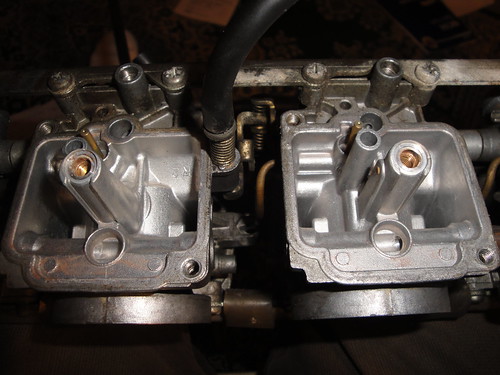
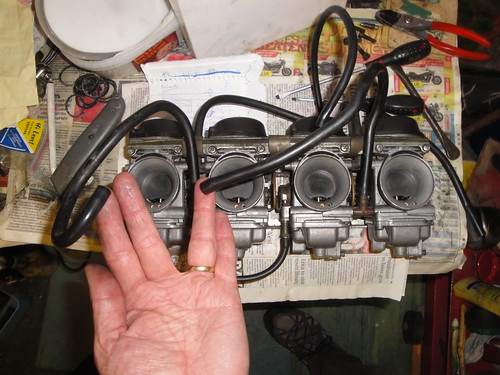 The carbs are fed by two fuel lines, each being 7mm bore preshaped plastic pipes. Both had hardened over time - quite understandably - making me think it would be unsafe to reuse them. I bought a meter of 7.6mm bore fuel injection hose and some new hose clips to replace them, along with two inline fuel filters with paper elements.
The carbs are fed by two fuel lines, each being 7mm bore preshaped plastic pipes. Both had hardened over time - quite understandably - making me think it would be unsafe to reuse them. I bought a meter of 7.6mm bore fuel injection hose and some new hose clips to replace them, along with two inline fuel filters with paper elements.
The fuel injection hose is double walled which means it is robust and will resist kinking. The downside is that they won't tolerate tight bends. I allowed about 5cm of extra length on each pipe, plus the fuel filters each being about 5cm long, to accommodate the wider turns the injection hose would need. There is plenty of room around the front and rear sides of the petrol tap. Unfortunately, the same is not true to the rear of the tap where one of the hoses and a vacuum line attach. Judicious juggling and careful routing of the main wiring harness are needed to make it work. More on that later. The additional length of the hoses means that I can uncouple the low fuel sensor wire, release the front of the petrol tank and rotate it 180 degrees to rest on the rear subframe for engine testing and tuning.
